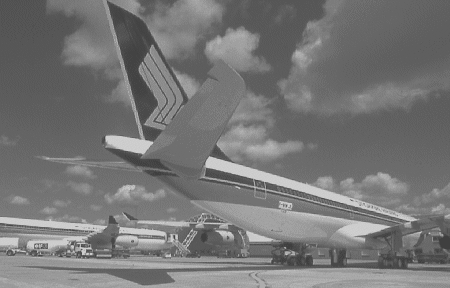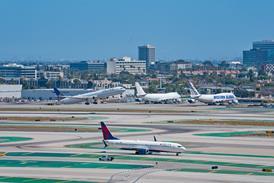Andrzej Jeziorski/SINGAPORE

Asia's airlines are wallowing in the depths of the region's economic crisis, with traffic and yields down and little evidence of any imminent recovery. The depth of the crisis was highlighted by Cathay Pacific Airways' recent revelation that it fell into the red last year for the first time since 1963, with an attributable loss of HK$542 million ($70 million). The immediate future looks no brighter: the airline declares that 1999 "looks to be another difficult year".
By late 1998, most carriers in the Asia-Pacific region agreed that business had reached, or was approaching, its low point. Some hope was in the air because of the strengthening of the Japanese yen and a lowering of Asian interest rates. That was taken as a sign that price wars in the region were ending.
This glimmer of hope did not herald the start of any immediate industry recovery, however. According to consultancy Salomon Smith Barney, operating conditions remain weak. Although it does not expect significant worsening of the industry's position, it equally does not see signs of a rebound.
"From our recent conversations with numerous industry contacts, few appear optimistic about 1999," says the consultancy. Load factor increases late last year experienced by carriers such as Singapore Airlines (SIA) - which showed passenger load factor increases of 3-5% over 1997 levels every month in the last quarter of 1998 - "appear somewhat misleading", hiding the level of discounting that has taken place.
Despite vigorous efforts by beleaguered Asian carriers to defer aircraft deliveries and cancel unwanted orders after the region's economic crisis struck in 1997, capacity in the region grew by an unexpectedly high 6.5% in 1998, with 214 new aircraft delivered throughout last year, increasing the net number of aircraft in Asia-Pacific airline fleets by 125. Of these new aircraft, 80 arrived in the final quarter, and 38 were delivered in December.
Salomon vice-president and senior research analyst Peter Negline says this was the combined result of a final rush by manufacturers to meet production schedules, as well as an effort by airlines to push scheduled 1998 deliveries back as far as possible to avoid taking on unwanted extra capacity earlier than necessary.
Negline predicts that capacity will continue to grow unnecessarily in 1999, with an expected year-end increase of 3.6% on 1998. He adds that some airlines, such as Cathay, are hinting that this could be controlled by cuts in fleet utilisation or even by mothballing some aircraft.
Of all Asia-Pacific carriers, Salomon predicts that only Qantas - benefiting from a strong Australasian market - and to a lesser extent SIA, are positioned to produce a positive earnings surprise during 1999.
The consultancy describes SIA as "the best-positioned airline based in South-East Asia", lacking the huge debts which burden carriers such as Malaysia Airlines, maintaining reasonable costs and bringing in additional income from investments and asset disposals such as aircraft sales. Reductions in Asian traffic have inevitably affected SIA's yields, but the airline is likely to remain "soundly profitable" despite the region's difficulties. Sources at the airline are optimistic about its results for fiscal year 1998-9, which will be revealed in mid-May.
The success of the Australian market in 1998 comes from a combination of low capacity growth combined with cost cutting and a strong domestic economy, with traffic expected to experience a further substantial boost as the Sydney Olympics approach in 2000. This market strength is reflected in the profit figures of Australian giants Qantas and Ansett for the last six months of 1998. These showed increases of 33.8% and 48%, respectively, against the same - albeit poor - period in 1997. The net profits were A$222.1 million ($140 million) for Qantas and A$61.6 million for Ansett.
China's airlines face a radical change in their longstanding growth policy, which saw them increasing capacity by almost 10% a year for nearly a decade. In January, the Civil Aviation Administration of China (CAAC) issued a directive calling for major restructuring of Chinese aviation, and for the national airline industry to reduce capacity by 5% during this year, a move which Salomon says "is necessary if the Chinese airlines are to reposition their long-term viability on profitable operations".
Philippine Airlines, the worst-hit national carrier in the region, is struggling back to its feet - and back into the confidence of its numerous creditors - with a revamped restructuring plan. The is also looking for a new strategic partner, after talks with Cathay collapsed late last year.
Change and restructuring, born partly of the region's economic wake-up call, is everywhere to be seen. But in an industry where health is closely bound to the health of national economies, Asia's airlines look set to continue for a while (in the spirit of the well-known Chinese curse) to live in interesting times.
Source: Flight International























